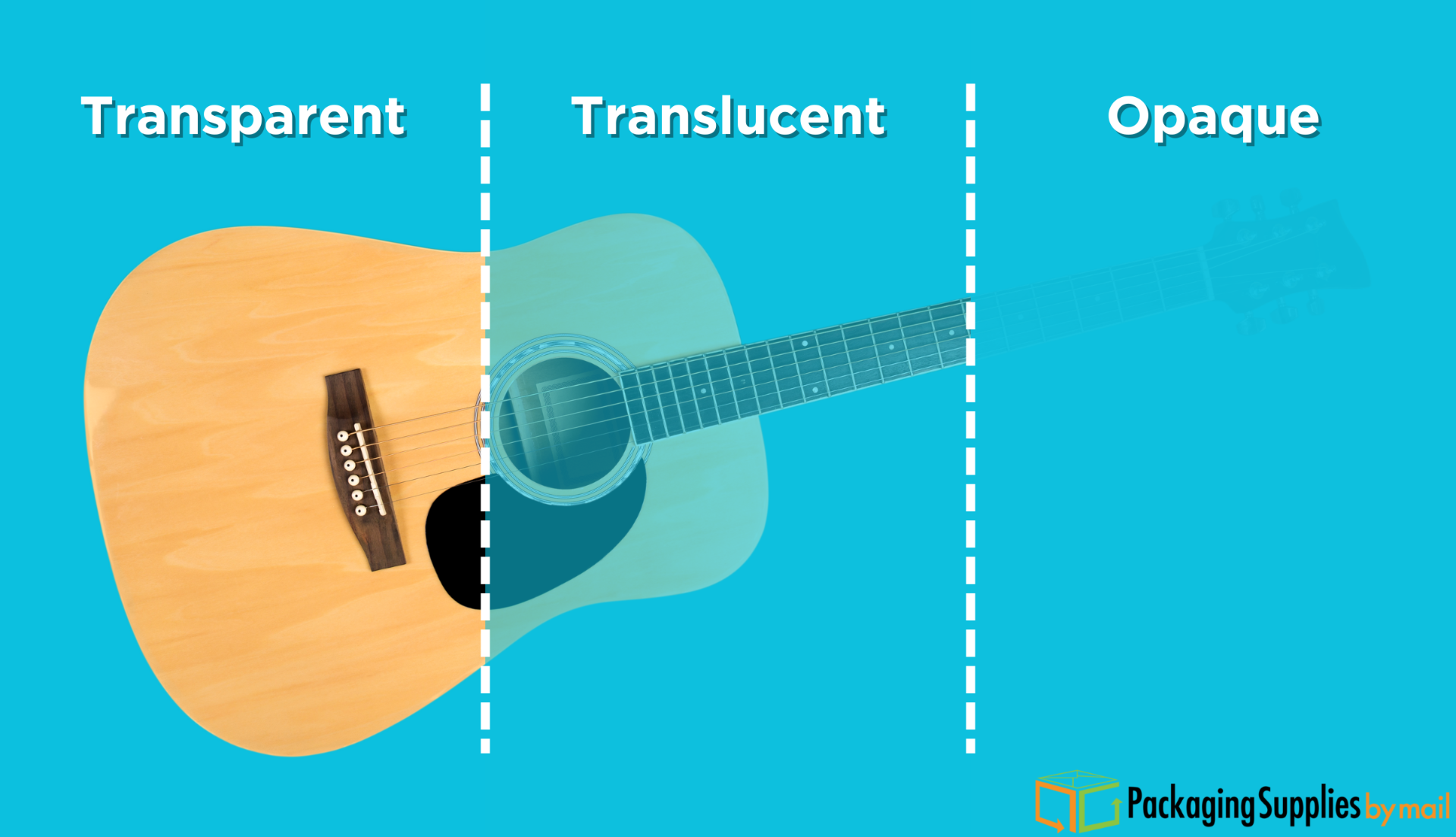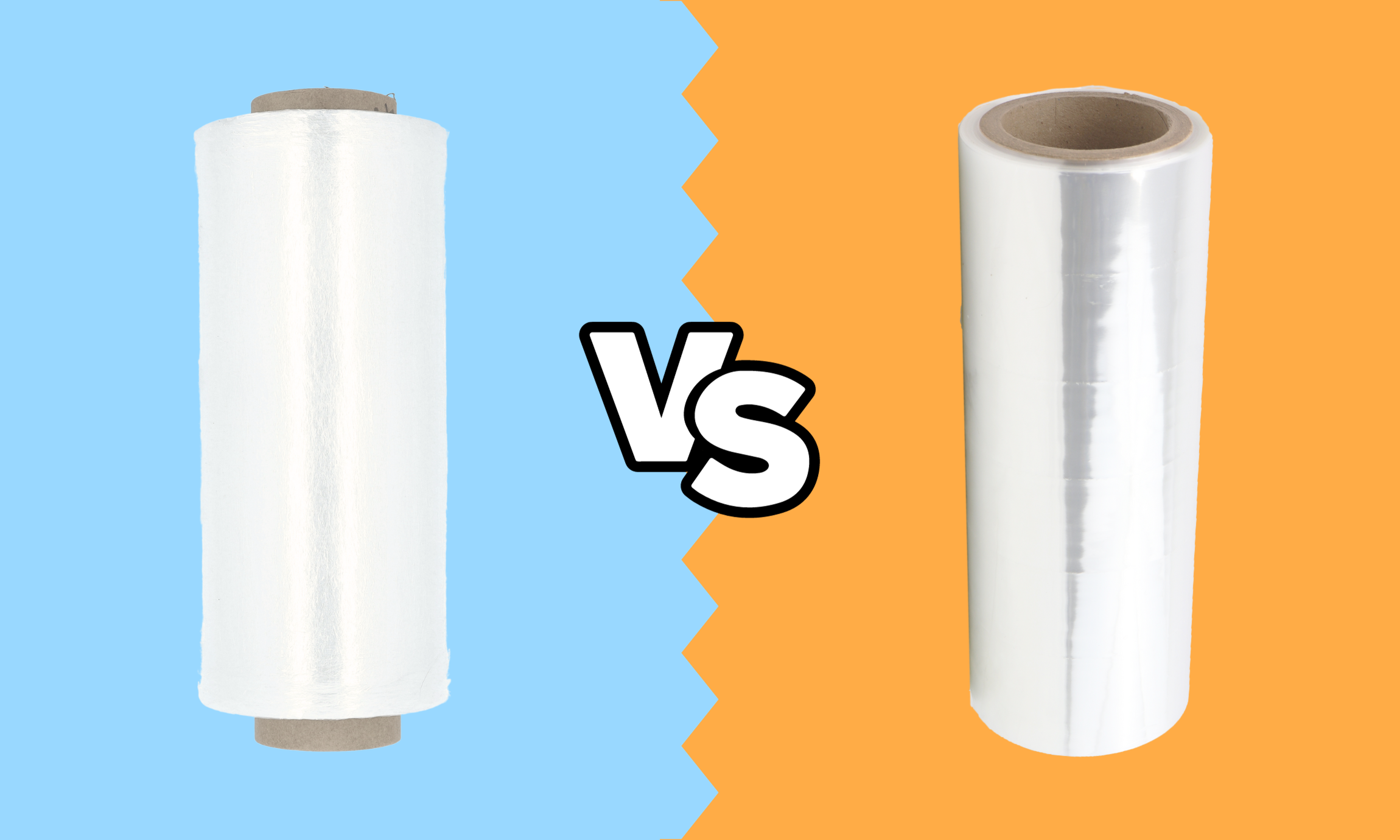You might be sitting there thinking to yourself that clear packaging is the way to go and any packaging that’s translucent or opaque is totally unnecessary. And you could think that, but unfortunately, you would be very wrong. While transparent stretch wrap, packing tape, and poly bags are the standard, they are far from being the be-all and end-all. Translucent and opaque packaging materials offer unique advantages that may make them a more ideal choice for you than clear materials, depending on the situation.
Let’s take a look at the different levels of transparency for packaging materials and see what they’re best used for.
Transparent/Clear
The biggest advantage of clear packaging, obviously, is that you can see through it. This means that workers and customers can instantly check the condition of their shipments without having to remove any of the packaging. With transparent packaging, workers can quickly identify products and scan barcodes in the warehouse. At the same time, customers can see the contents inside and the state they’re in to determine if the item is right for them.
Transparent packaging is mostly used to deliver brochures, magazines, apparel, and samples of stationery. If you’re interested in printing custom product information or your company logo on the parcel, you can opt for packaging materials that are transparent on one side and opaque on the other.
Clear packaging, like our clear view poly mailers for instance, offers many benefits to both businesses and consumers. With their clean, professional appearance and transparent window, clear view poly mailers can take your packaging and deliveries to the next level.
Translucent/Tinted
Translucent packaging is great for organizing and branding. Unlike clear packaging, this packaging is tinted to a bold, bright color that helps make it stand out. However, this material has enough translucence so that the inner contents are visible. This helps workers who need to quickly identify items and scan barcodes, as well as customers who want to see what’s inside the packaging.
On top of this, some companies designate certain colors of packaging for certain kinds of goods, like apparel, electronics, and hardware. This color-coding system helps businesses keep track of their inventory and shipments and improves the efficiency of their operations.
Some specialty packaging is tinted to indicate their special properties. Anti-static and VCI stretch wraps come tinted in pink and blue, respectively, to signal to workers that these materials should be used exclusively with items that are sensitive to static electricity, environmental corrosion, and other adverse elements.

Opaque/Colored
Unlike transparent and translucent packaging, opaque packaging completely conceals the contents that it surrounds. While this means that you cannot see what’s inside or what condition it’s in, it also means opaque packaging offers unique advantages that are more than worth considering.
Because it conceals the items it contains, opaque packaging is a great tool to prevent tampering and pilferage. Thieves and vandals cannot determine what’s underneath the packaging and are therefore far less likely to go through your goods.
However, thieves and vandals aren’t the only sources of trouble for your packaged goods. What about the environment itself? Environmental contaminants and the sun’s powerful UV rays can wreak absolute havoc on your shipments. Don’t let the sun ruin your deliveries! Get yourself an order of amber bags, which are polyethylene, re-closable bags that are tinted so dark that they block UV rays from affecting the contents held inside. Not only do amber bags protect your goods from the sun, but they also obscure the inner contents, acting as an additional measure of security.
Clearing Out
And that’s the lowdown on transparent, translucent, and opaque packaging! Sometimes it’s ideal to make your goods as visible as possible with clear packaging, other times it’s better to conceal and protect your deliveries with colored and opaque materials. And don’t forget the branding and organizing possibilities that translucent packaging provides.
In the world of food packaging, interestingly, consumers can be easily swayed by tasty-looking snacks held in clear packaging, but may also eat more snacks from opaque packaging. To learn more about this phenomenon and how this may affect your choice of packaging, be sure to check out this article from Snack Food & Wholesale Bakery about the impact of package visibility on food products.
We here at PackagingSuppliesByMail offer a wide variety of packaging materials at varying levels of visibility. If you’re still unsure of what’s right for you, get yourself a sampling of transparent to opaque materials and see how they can improve your future shipments.







Log In